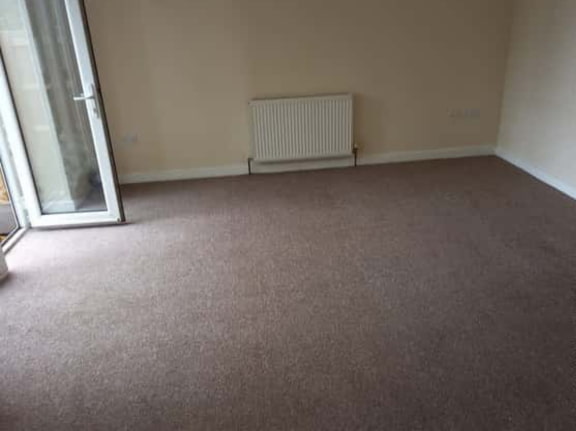Introduction
When most homeowners think about mould, they picture it creeping along walls or gathering around damp window sills. But one of the most overlooked breeding grounds for mould is right under your feet—your carpet. Warmth, moisture, and organic matter make the perfect environment for mould spores to settle and spread, particularly in areas like hallways, basements, or any room prone to damp.
At Ruislip Carpet Cleaning Solutions, we regularly help property owners across Ruislip and Hillingdon tackle issues related to damp, staining, and unwanted odours in carpets. A question we often get is whether regular carpet cleaning can truly prevent mould. The answer is a confident yes—when it’s done properly, professionally, and at the right intervals.
Let’s explore how routine cleaning helps defend against mould and why ignoring your carpet could result in long-term consequences for your home and health.
Why Carpets Are Vulnerable to Mould
Hidden Moisture is the Real Culprit
Carpet fibres can absorb and trap moisture from a variety of sources:
- Humid air in poorly ventilated spaces
- Spilled drinks or pet accidents
- Foot traffic bringing in wet debris
- Leaky pipes or condensation beneath the surface
Even small amounts of moisture left untreated can seep into the underlay, creating the perfect conditions for mould colonies to develop invisibly over time.
Mould Doesn’t Stay Put
Once mould spores settle into a damp carpet, they multiply fast. In a few days, you may notice:
- A musty odour that lingers despite vacuuming
- Discolouration or dark patches in corners
- Allergy flare-ups like coughing or sneezing
- Respiratory discomfort, especially in vulnerable groups
By the time mould becomes visible, it’s already well established—and often difficult to eliminate without replacing the carpet entirely.
How Regular Carpet Cleaning Helps Prevent Mould
Removes Moisture and Organic Build-up
Professional carpet cleaning removes more than just surface dirt. Using advanced extraction methods, technicians lift:
- Embedded dirt that feeds mould spores
- Dust mites, pet dander, and bacteria
- Trapped moisture and lingering odours
Unlike standard vacuuming, hot water extraction or low-moisture methods used by Ruislip Carpet Cleaning Solutions get deep into the pile and remove the material mould thrives on.
Supports Proper Drying and Ventilation
One common myth is that cleaning carpets adds to the moisture problem. In fact, professionally cleaned carpets are dried far more efficiently than those left to dry after spills or exposure to damp.
With correct tools and airflow management, a cleaned carpet can be dry in just a few hours, ensuring mould doesn’t get a chance to take hold.
Keeps High-Risk Areas Under Control
Areas most susceptible to mould include:
- Basements and ground floors with poor airflow
- Hallways and entryways exposed to wet shoes
- Rooms with large rugs over hard floors (where moisture gets trapped underneath)
- Bedrooms and lounges with heavy furniture blocking airflow
Routine cleaning helps monitor and address these hotspots before mould has a chance to settle in.
The Importance of Frequency and Technique
Not all carpet cleaning is created equal. A once-a-year surface clean won’t do much to prevent mould if your carpet is subjected to regular damp or high traffic. We typically recommend:
- Every 6–12 months for high-traffic households
- Every 3–6 months for homes with pets, small children, or a history of damp
- Spot treatments for spills, leaks, or sudden moisture exposure
Ruislip Carpet Cleaning Solutions uses low-moisture, quick-dry systems designed to minimise risk and maximise hygiene, especially in homes prone to condensation or poor ventilation.
Additional Steps to Support Mould Prevention
While regular cleaning is a strong line of defence, it’s most effective when combined with a few other simple practices:
- Improve ventilation by using extractor fans and opening windows
- Avoid leaving wet towels, laundry, or rugs on carpets
- Use dehumidifiers in areas with persistent humidity
- Address leaks or damp patches promptly
- Raise furniture slightly to allow air to circulate under rugs and carpet
Together with a professional cleaning routine, these habits help create an environment where mould struggles to survive.
Conclusion
Mould isn’t just a cosmetic nuisance—it can affect the quality of your indoor air and your overall health. While it often hides in places we forget to check, your carpet is one of the easiest spots for mould to take root, especially in damp or high-traffic homes.
The good news is that regular, professional carpet cleaning can make a significant difference. By removing dirt, moisture, and allergens before they become a problem, you’re not only protecting your flooring but also your home’s air quality and your family’s wellbeing.
At Ruislip Carpet Cleaning Solutions, we’re proud to offer expert services that target mould at its source—ensuring your carpets stay fresh, healthy, and mould-free all year round. Get in touch with us to schedule your next deep clean and breathe easier knowing your home is in good hands.
Call us on: 01895 540 999
Click here to find out more about Ruislip Carpet Cleaning Solutions
Click here to complete our contact form and see how we can help with your carpet needs.

